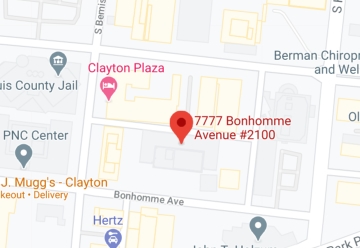
The sheer bulk of semi-trucks and large commercial vehicles creates significant safety hazards for other drivers. Tractor-trailers and similar commercial vehicles are so big that their drivers cannot always see what is happening around them. These blind spots are prime locations for a collision that could leave other drivers and passengers with devastating injuries.
Sumner Law Group, LLC, is ready to defend your rights after a truck blind spot accident in St. Louis. Our lawyers have more than 50 years of combined experience helping accident victims seek the money and accountability they deserve. We are ready to help you to fight for fair compensation in your case.
Contact us today to speak with a truck blind spot accident lawyer in St. Louis. Our initial consultations are free, and we never charge a fee unless we secure compensation first.
What Are Blind Spots?
A truck’s blind spots are the areas around the vehicle which the driver cannot see. Since the driver cannot see anything in these areas, they may lead the driver to steer into the path of another vehicle or road user without realizing the potential danger. While every vehicle has blind spots, the ones for a semi-truck are much larger than those for a car because the truck is much bigger.
Where Are the Blind Spots Around a Truck?
A semi-truck has four primary blind spots. Those blind spots are:
- In the front – Semi-trucks sit high off the ground. They typically have long engine compartments that block their view. In turn, the design makes it difficult for drivers to see vehicles, pedestrians, and cyclists immediately in front of them.
- On the left side – A tractor-trailer’s left-side blind spot runs diagonally from the driver’s side of the cabin toward the back of the trailer. Truck drivers have difficulty seeing cars or other objects in this blind spot, which can lead to a collision when a driver merges or attempts to overtake another vehicle.
- On the right side – A tractor-trailer’s right-side blind spot runs diagonally from the passenger’s side of the cabin toward the back of the trailer. However, this blind spot is more prominent because the truck driver sits further away from the vehicle’s right side.
- In the back – When a truck is towing a trailer, the trailer completely blocks the driver’s view of anything immediately behind the truck. If you are driving behind a truck and cannot see its side-view mirrors, its driver likely cannot see you.
Causes of Blind Spot Crashes in St. Louis
Some common causes of truck blind spot crashes in St. Louis are:
- Inadequately trained truck drivers
- Inexperienced truck drivers
- Improperly aligned mirrors
- Lack of accident-avoidance technology
- Failure to check mirrors before merging
- Truck driver distraction
- Truck driver intoxication
- Truck driver fatigue
Common Types of Truck Blind Spot Accidents
A few common types of St. Louis truck blind spot accidents include:
- Rear-end accidents – Rear-end blind spot accidents often happen because the truck driver cannot see another vehicle directly in front of them. A truck driver following another vehicle too closely may not even know the car is there. Similarly, another vehicle may collide with a truck from behind because the truck driver suddenly slows down without looking for someone behind them.
- Sideswipe accidents – Sideswipe accidents can happen because the truck driver cannot see another vehicle in their left or right blind spot. If drivers do not check their blind spots before changing lanes or merging on or off a highway, they risk colliding with vehicles already in those lanes.
- Side-impact/T-bone accidents – Side-impact accidents, also known as T-bone accidents, are rarer than other blind spot accidents. That said, they can be devastating, as vehicles lack crumple zones on their sides, exposing their occupants to the full force of a collision.
Who Is at Fault for a Truck Accident Caused by a Blind Spot?
The party at fault for a truck blind spot accident depends on the circumstances of the crash. In many cases, these accidents occur because a truck driver forgot to check their blind spots or because the driver was distracted, intoxicated, or otherwise negligent. In these cases, the truck driver is at fault for the crash.
However, truck drivers are not necessarily the only liable party for a blind spot accident. Trucking companies are supposed to hire experienced drivers and monitor them for dangerous behaviors like drunk driving. If a trucking company fails in any of these duties, it also could be held liable for a blind spot crash. Additionally, employers are typically held responsible for crashes caused by on-the-job employees.
How Can I Avoid Being in a Truck Blind Spot Crash?
Here are a few things you can do to reduce your chances of being involved in a truck blind spot accident:
- Make sure a truck driver can see you before passing the truck.
- Do not linger in a truck’s blind spots.
- Never pass a truck on the right.
- Move quickly through a truck’s blind spots when passing.
- Give yourself plenty of space when driving behind a truck.
St. Louis Blind Spot Accident Statistics
The Federal Motor Carrier Safety Administration (FMCSA) reports that, in one recent year, 968 fatal crashes and about 32,000 injury crashes could be attributed to a truck’s movement before the collision. Many of these accidents likely occurred because drivers did not check their blind spots before maneuvering their vehicles.
Contact Our Experienced St. Louis Truck Accident Lawyers Today
Sumner Law Group, LLC is ready to help if you’ve been injured by a truck driver who failed to check their blind spots. Contact us today for a free consultation with our experienced St. Louis truck accident lawyers.

















